GreenHab Report – April 9th
Crew 279 GreenHab Report 09-04-2023
GreenHab Officer: Augustin Tribolet
Environmental control: Open during day and heater during night
Average temperatures: 77.2 F
Hours of supplemental light: N/A
Daily water usage for crops: 9.5 gallons
Daily water usage for research and/or other purposes: N/A
Water in Blue Tank: 117.7 gallons
Time(s) of watering for crops: 09:15, 18:00–
Changes to crops: N/A
Narrative: As usual, general watering of plants and crops was done today. The GreenHab has also been swept away this morning. The sunlight was intense, so the door was left open all day. Some tomato leaves are starting to turn brown but are still producing tomatoes. Another mouse was extracted from the GreenHab, and the mouse trap will be reinstalled tonight.
Harvest: N/A
Support/supplies needed: N/A
Sol Summary – April 9th
Crew 279 Sol Summary Report 09-04-2023
Sol: 7
Summary Title: An adventurous Sunday
Author’s name: Agnès Dekeyser, Crew Executive Officer
Mission Status: Nominal
Sol Activity Summary:
After a difficult awakening for the whole crew and some quickly swallowed cereals, three of them were ready for their EVA. The purpose ? Checking the bacteria samples placed at the top of the North Ridge as well as collecting the data recorded by the Arduino attached to the meteorological balloon. Unfortunately for the crew, it didn’t go as planned. It seems that the balloon got hit on a rock making it impossible to inflate anymore. The Arduino was also a bit damaged leading to no data recording. Still, the bacteria were fine and will stay there for a few more days.
After a good lunch, the crew got ready for the second EVA of the day. The martionauts went to Candor Chasma to perform some drone mapping. They had the time to perform four of them before coming back to the Hab. They found beautiful landscapes as well as wild animal footprints. When they came back, they were greeted by Martians standing in front of the MDRS boundary line…
In the meantime, the rest of the crew worked on their experiments and data analysis, including taking pictures of the sun.
Look Ahead Plan:
Tomorrow, the crew will go on EVA to continue the radioactivity measurements for Thomas’ experiment. He still has to make half of the measurements planned. For the next few days, the crew will continue the experiments including 3D printing, checking bacteria samples at the North Ridge, and drone mapping of different places in the desert. All the data collected will then need to be analyzed.
Anomalies in work: nun-functional robotic observatory and the battery wires of Opportunity needs to be replaced
Weather: Sunny, high 22°C/72°F, low 4°C/40°F
Crew Physical Status: Nominal
EVA: See above
Reports to be filed: Journalist report, Greenhab report, Operations report, EVA report, EVA request
Support Requested: None
Operations Report – April 9th
Crew 279 Operations Report 09-04-2023
SOL: 7
Name of person filing report: Ioana Dimitrova
Non-nominal systems: robotic observatory, Opportunity
Notes on non-nominal systems:
Robotic observatory: awaiting a solution from the manufacturer.
Opportunity Rover : see rover section
ROVERS
Spirit rover used: yes
Hours: 228,5
Beginning charge: 100%
Ending charge: 69%
Currently charging: no
Opportunity rover used: yes
Hours: 120,1
Beginning charge: 100%
Ending charge: 83%
Currently charging: yes
Curiosity rover used: yes
Hours: 215,5
Beginning charge: 100%
Ending charge: 66%
Currently charging: no
Perseverance rover used: yes
Hours: 260,5
Beginning charge: 100%
Ending charge: 79%
Currently charging: yes
General notes on rovers: one of the battery wires on the driver side of Opportunity is corroded out and needs to be replaced.
Summary of Hab operations: Music influence on stress experiment was conducted. Processing of sun images from solar observatory. Team building exercises.
WATER USE: 16,1
Water (static tank): 354
Static tank pipe heater (on or off): off
Static tank heater (On or off): off
Toilet tank emptied: no
Summary of internet: used from 14:00 to 21:00 for experiments and reports.
Summary of suits and radios: Radios charging nominal. Suits charging nominal. Question about helmet in Mission Support questions.
Summary of GreenHab operations:
WATER USE: 9,5
Heater: Off
Supplemental light: Off
Harvest: none
Summary of ScienceDome operations : Editing of mid-mission video
Dual split: Heat or AC, Off
Summary of RAM operations: Successful print of 3D rotor blades for rotor blade experiment.
Summary of any observatory issues: see above for robotic observatory. Solar observatory opened, solar pictures taken, more details in observatory report.
Summary of health and safety issues: none
Questions, concerns and requests to Mission Support:
We noticed some broken plastic in one of the helmets. See picture attached. We didn’t have any impacts or collisions with this helmet so we don’t know if it was already there or not. It doesn’t let any air out but should the Crew Engineer still try to fix it with glue?
Astronomy Report – April 9th
[category
astronomy-report]
Crew 279 Astronomer Report 09April2023
Today, I’ve used the ZWO camera to capture the sun’s chromosphere and prominence (the picture is attached). Capturing this image was quite challenging because there was a slim layer of clouds today which decreased the contrast and details in my image (this is an hypothesis). I also noticed a lot of dust on the front lens but I did not touch it.
In general, whatever the orientation of the ZWO camera, the right side of the picture was always brighter ; so much that I had to decrease the gain and gamma for getting information in the prominence right side. Could it be due to the clouds’ diffraction.
I have not used the tuning module (I only used the chromosphere tuner) . Is it normal ?
Pictures settings :
Chromosphere : Gain=50, Exposure=0.0155, Gamma=1
Prominence : Gain=150, Exposure=0.0155, Gamma=60
Flat : Gain=50, Exposure=0.0155, Gamma=1
The last problem that I got is about the flat : I am really struggling to get all the sun in the frame. In fact I think it is nearly impossible… Thus, the flat takes into account a dark region of the sky in the corners and the final corners of the chromosphere is impacted (see chromosphere frame). In my final composite, I’ve cropped the corners to solve the problem :’)
I will try to take pictures of the Sun tomorrow, I hope to see greater prominence.
Concerning the green and blue frames of M51, the weather at MLC_RCOS16 has changed a bit and I prefer to lunch them tomorrow night in order to have clear skies.
Here is my report :
Astronomy Report
Name: le Bussy Gwenaël
Crew: 279
Date: 09/04/23
MDRS ROBOTIC OBSERVATORY
Robotic Telescope Requested (choose one) MDRS-14 (MLC-RCOS16) MDRS-WF
Objects to be Imaged this Evening: /
Images submitted with this report: /
Problems Encountered: /
MUSK OBSERVATORY
Solar Features Observed: Sun’s chromosphere and prominence
Images submitted with this report: Sun_23_04_09_chromosphere_and_prominence_composite, Sun_23_04_09_chromosphere, Sun_23_04_09_prominence
Problems Encountered: Frame too big compared to the sun and problem for getting a useful flat, right side of the frame brighter.
Journalist Report – April 9th
CREW 279 – Journalist Report – 09APR2023
Journalist Report: Aglaé Sacré, Crew journalist
SOL 7 : The EVA’S day
Today is Sunday, who says Sunday says rest?
Not for the Crew Ares, on the program today: 2 EVA’s.
This morning, 3 of us left for the first EVA to check the bacteria samples and the weather balloon placed two days earlier at North Ridge.
After a well-deserved break and a delicious meal, it is already time for the second EVA of the day. This time, it is a new mapping for Augustin’s experiment. It is at Condor Chasma that he collected his data today!
During this time, the team remaining in the base took the opportunity to make a big cleaning of mid-mission!
Our astronomer was able to observe the sun today, the first pictures are superb! We can’t wait to share more with you!
Five hours of EVA is tiring and makes you hungry! That’s why Aglaé, our crew journalist, welcomed the explorers with delicious almond and chocolate chip cookies.
After a well-deserved snack, the experiments could resume during the late afternoon.
Before sending our reports we were able to finish the puzzle in the Hab and proudly indicate on the back of the puzzle the name of our mission like others before us !
See you tomorrow for new adventures!
EVA Report – April 9th
Crew 279 EVA Report 09-04-2023
EVA #7
Author : Ioana Dimitrova, Crew Engineer
Purpose of EVA:
The purpose of the EVA was to check out the weather balloon and bacteria samples from Agnes in North Ridge that we put in on SOL 5. We needed to check that everything is in good condition and download the data from the arduino to analyze it in more detail. These checks are essential to ensure the accuracy and success of Agnes’ research project. It was necessary to inflate the helium balloon and therefore carry the tanks to the top of North Ridge, Ioana and Ttele were there as support.
Start time: 9:10 am
End time: 10:45 am
Narrative:
At 9:10, the three astronauts opened the door of the Hab airlock and took Opportunity and Perseverance for a drive along Cow Dung Road 0110. We parked our rovers at the left side of the road on the right side of the North Ridge, exactly where we left them at SOL 5. We climbed North Ridge quickly without problems by the same route we took last time, carrying the helium tank. We got to the top at 9:38 am. Upon arrival, we couldn’t see the weather balloon in the air and started searching for it on the ground by following the rope it was attached to. After following and untying the rope from several rocks, we retrieved the balloon. Sadly, the balloon had fallen to the ground due to a lack of helium and had a small tear in it surely from a rock or plant it had passed through. So blowing new helium in it had no sense. We untied it and took it home with us. The Arduino attached to it was also impacted by the impact of the balloon on the ground. Agnes was a bit disappointed but still happy she tried. She checked her bacteria which seemed to be in a good condition. We left them there as they won’t be analyzed until Sol11. We added a new information sign to the experiment which explained what the setup was and why people should not touch it. At 10:20, we were done with our tasks and headed down the ridge. We took our rovers at 10:38 and arrived at base on time.
Destination: North Ridge
Coordinates (use UTM WGS 84): 518500 E, 4251750 N
Participants: Ioana (EVA leader)(Crew Engineer), Agnes (XO), Ttele (HSO)
Road(s) and routes per MDRS Map: Cow Dung Road 0110
Mode of travel: Drive on Cow Dung Road 0110 to North Ridge then walking on the top of North Ridge.
EVA: # 8
Author: Augustin Tribolet, Crew GreenHab Officer
Purpose of EVA: Augustin wanted to map a Canyon for the first time. Some interesting areas protected by radiation can indeed be found in the canyon since the water dragged the rocks. The clief of both sides give a natural shield for radiation on Mars or even better cavities can be present. With the 3D map reconstructed, Augustin will see if we can refind with the 3D map reconstructed, the most protected area found onsite during the EVA. This protected region can be useful for astronauts themself to implement bases on Mars or to find life on Mars, such as extremophiles (studied by Agnès). This time it was Ioana’s turn to always have an eye on the drone to avoid a potential new crash.
Start time: 14:00
End time: 17:00
Narrative:
For the GHO’s experiment, the canyon Candor Chasma has been mapped for the first time during this EVA. The 3 crew members drove with the rovers and arrived at their destination at 14:38. The EVA started with an analysis of the terrains, some interesting areas protected from radiation have been identified inside the Canyon. Then, the drone has been deployed and launched to map regions including these identified targets. A total of four different scans were conducted, one at the entrance and three inside the canyon itself.
Due to some loss of data in the previous drone missions, Agnès and Ioana have also been trained to use the drone. They have first learned how to take off, guid the drone, perform basic commands and finally land. Then, they have learned how to scan a zone for the purpose of photogrammetry, which means programming the application controlling the drone with the good parameters (to map and keep the drone safely in the field of view). In this way, they will be able to use the drone to map some region in their next EVA for the purpose of the GreenHab Officer’s experiment.
The EVA Crew was back at the Hab at 17:00. The objectives of the EVA were completed, interesting regions were found and will be processed and analysed with the computer.
Destination: Candor Chasma
Coordinates (use UTM WSG 84): 521500 E ,4251000 N
EVA Participants: Augustin (EVA Leader, GHO), Ioana (Engineer), Agnes (XO)
Road(s) and routes per MDRS Map: Cow Dung Road 0110 and Galileo Road 1104
Mode of travel: Drive on Cow Dung Road 0110 then Galileo Road 1104 to Compass Rock then walking to Candor Chasma.
Supplemental Operations Report – April 8th
Supplemental Operations Report 08-Apr-2023
Name of person filing report: Sergii Iakymov
Reason for Report: Routine.
Non-Nominal Systems: Robotic observatory, Hab car, Opportunity
Action taken for non-nominal systems: Observatory is awaiting for new parts to be procured. Hab Car – electrical issues, will be taken to Loa for diagnostic. Opportunity, see below.
Power system:
Solar–SOC Last 24 hours: Max 100% Min 34 % Avg 55.6%. Solar experienced overload on April 6th by excess input power from the Sun. This was noticed by the Crew engineer during work on her project in the ScienceDom. She heard a loud noise and saw a bright flash from one of the battery chargers. The charger went in P05 – Power Limited (Above Voltage Regulation) mode. After consultations with Dr. Rupert, the system was restarted, but it did not change anything. Later during the day Inverters went offline four times in a row without obvious reason and no fault signals. A decision was made to turn on the generator around 7pm to let inverters rest without load. Inverters were restarted next morning and are functioning properly by this moment.
Power System Notes: Generator run time about 11:30pm – 7am. Was not used on April 1st, and from 7pm – 7am on April 6. Hours – 3639.7.
Propane Reading Station Tank: 57%
Propane Reading Director Tank: 78%
Propane Reading Intern Tank: 75%
Propane Reading Generator Tank: 70%
Water (Static Tank) – 389 gallons
Water in GreenHab – 138 gallons
Water (Outpost tank) – 210 gallons
Water in Science Dome: 0 gallons
Hab Toilet Tank emptied: n/a
Sojourner rover used: No
Hours: 190.4
Beginning Charge: 100
Ending Charge: 100
Currently Charging: Yes
Notes on Rovers: All are plugged in, charged, and serviced. Parts needed to be replaced are ordered, see notes below:Opportunity: one battery connector wire corroded out and disconnected, replacement needed.
Curiosity: one battery connector wire is heavily corroded and requires a replacement
Sojourner: two battery connector wires and one positive terminal wire are heavily corroded and require a replacement.
ATV’s Used: (Honda, 350.1, 350.2, 300): None
Reason for use: n/a
Oil Added? No
ATV Fuel Used: 0 Gals
Ethanol Free Gasoline — 0 Gallons
# Hours the ATVs were Used today: 0
Notes on ATV: There was no time for me to get to Richfield (nor good enough weather) to purchase the trailer. I will be doing that remotely and Sergii will pick it up.
HabCar used and why, where? Yes, to the Hanksville landfield and one water run. Battery was not charging from the car and required to be taken out and recharged after one trip to Hanksville. New battery was purchased but it did not fix the issue. Vehicle is scheduled to be taken to Loa for service on April 11th.
Crew Car used and why, where? Yes. By crew from Grand Junction, to Hanksville water runs and supplies, Loa to pick up a new battery for the Hab car..
General notes and comments: nothing to report
Dual Split in Science Dome: off due to warmer weather.
Summary of Internet: Starlink expirinsed 22 min 47 sec outage on April 7th. Current status – nominal.
Summary of suits and radios: Radio #4 was found without a rubber piece of PTT button and was replaced. Headset #5 was malfunctioning and replaced. Suit #8 battery replaced.
EVA COMMS: Nominal
Campus wide inspection, if action taken, what and why: nothing to report
Summary of General Operations: Crew 279 in simulation, all nominal.
Summary of Hab operations: Nominal. First AID kit was resupplied by antibiotic ointment and triangular bandages.
Summary of GreenHab Operations: Two mice were captured and released to the wild. Door is open during sunny days.
Summary of SciDome Operations: Scientific freezer was installed and plugged in.
Summary of any Observatory Issues: Robotic Observatory remains unoperational and awaiting for replacement parts.
Summary of RAM Operations: Nothing to report
Summary of Outpost Operations:
Director’s trailer:
1) Front door lock was replaced due to old key loss;
2) Bathroom faucet was inspected due to lack of pressure in the hot water line. Inspection revealed that it got clogged inside with now way to get it apart. It was replaced. Current status – nominal.
3) Shower head was adjusted. A plastic insert from inside the head was removed, which was preventing a big amount of water from flowing through. This fixed low water flow.
4) Second half of the door for the cat toilet was found and will be installed next week.
5) Trailer was clean prior to my move next week.
Interns trailer:
1) Bathroom faucet has a broken cold water handle and will be replaced next week.
The Trailer parked and is awaiting for the number plate to be installed and photos taken.
Summary of Health and Safety Issues: Section of the tunnel at the ScienceDom was broken by high winds on April 3rd and separated by station personnel.
Questions, Concerns, Supplies needed and Requests: Nothing to report
Astronomy Report – April 5th
[category
astronomy-report]
Yesterday, the picture of the sun was just an illustration of my visual observation and my first manipulation of the musk telescope ; I put my phone’s camera in front of the viewer. Nevertheless, the settings were : f2.4 ; 1/120s ; 4,32mm ; iso 125.
Tomorrow and on Monday, I will use the ZWO camera to get the most details out of our beautiful sun.
Concerning my last images of M63, I have no data about « WCS » due to the MLC-RCOS16 failure. Thus I cannot align them properly using the procedure described in the tutorial. I will try using another technique to post-process those images.
Last night, I lunched on M 51 :
- 15 x 300sec Lum
- 6 X 300sec Red
- 9 x 300sec Green
- 12 x 300sec Blue
The number of frames is based on previous experiences of other astronomers found online.
The first frames came out perfectly but Green and Blue frames are not tracked properly I don’t know why… Do you have an idea ?
Looking at the weather, I’ll lunch again these frames tomorrow night to complete my observation
Here is my report :
Astronomy Report
Name: le Bussy Gwenaël
Crew: 279
Date: 08/04/23
MDRS ROBOTIC OBSERVATORY
Robotic Telescope Requested (choose one) MDRS-14 (MLC-RCOS16) MDRS-WF
Objects to be Imaged this Evening: /
Images submitted with this report: M51_Lum_300sec_08April2023, M51_Red_300sec_08April2023, M51_Green_300sec_08April2023, M51_Blue_300sec_08April2023.
Problems Encountered: « WCS registration failed » on Skynet + not tracked images for Green and Blue images
MUSK OBSERVATORY
Solar Features Observed: /
Images submitted with this report: /
Problems Encountered: /
Research Report – April 8th
[category science-report]
During this past week, Crew ARES has continuously worked on their research. Our experiments cover a large range of topics and we hope to get good results out of our efforts. We still need to collect the data and work hard during this next week to exploit our simulation time in the most efficient way possible. Here is how our experiments are advancing.
“Confinement FOMO” – Aglaé Sacré
FOMO, “Fear of missing out”, can appear when we are cut out of society. The Mars simulation completely cuts the crew off of the network and the outer world, which makes it the best place to study how the lack of social media affects the mental condition of not wanting to miss out on something. The crew answered some anonymous questionnaires before leaving and were asked to check their social media usage data on their phone to realise how much time they were actually spending online on a daily basis. During this first week, different anonymous questionnaires were completed where we assess how we feel without social media and if we feel like we’re missing out on something. This way Aglaé could compare how the crew used to use social media, how they predicted they would live without it and how they actually lived without it.
As Crew Journalist, she writes the daily summaries and keeps the world notified on what work we do every day. She is also taking photos and videos to document and present after our mission.
“Radiation: how attacked are we?” – Thomas Stinglhamber
Every day, everywhere, different types of radiation attack us. On Mars, radiation will be way more brutal and dangerous than on Earth due to the difference of the atmosphere. It is thus very important to be able to have easy ways to measure the dosage of this radiation.
Thanks to BeSure’s technology, Thomas has installed dosimeters both inside and outside the station to check how radiation proof the station actually is. He also gave the crewmates an individual dosimeter that they wear at all times to measure their personal dosage. He will collect all their data at the end of the simulation. Complementary to this, Thomas uses a Gamma detector to map out the dosage of the soil around the station by searching for radioactive isotopes near the station. He has already completed a 3-hour EVA where he took measures at different coordinates that he mapped out thanks to a Python grid. He still needs to do two EVA’s to measure the whole region close to the base. He is also trying to combine his grid with Augustin’s 3D maps.
“High Speed Rotor Manufacturing” – Gwenael le Bussy
The Martian atmosphere is a hundred times less dense than the one on Earth. This means that every flying object we would like to use for observation, scouting or measurements needs to be adapted to the physics of that new environment. Like the ones on Ingenuity, the rotor blades have to have a special shape. Naturally, every piece of equipment may encounter a problem and need to be repaired or replaced. The problem cannot be predicted precisely in advance, which means that we need an adaptable solution. Gwenael will study how he can use 3D printing to model (with SolidWorks with NACA profile) and print rotor blades for the Martian atmosphere. Afterwards, he will test them with a high speed motor and measure their thrust with a scale. The 3D printer was successfully reconstructed and has launched a couple of test prints. One of the test prints is an oven knob, we are trying to see if we can make one that works better than the ones currently used. Gwenael has started designing a blade and will start printing in the days to come.
Parallel to his aerodynamics work, our Crew Astronomer has already observed the Sun with the solar observatory but is yet to take pictures as weather has not been favourable. He has also used the New Mexico observatory remotely to observe M63 and M51 and is currently working on the editing of the photos.
“Space Oddity” – Ioana Dimitrova
Long term spaceflight separates astronauts from society and their loved ones for months and months. It also keeps them confined without leaving them a possibility to feel free and do whatever they want. This can lead to mental health problems, stress, tensions within the team and can put the mission at risk. Music could be a cheap, easily transportable and effective solution to this problem. Choosing your personal music to help you relax could have multiple benefits. It could help you transport yourself elsewhere, work through your emotions and stimulate your senses. Ioana tests if this theory is true by measuring cardiac parameters during relaxing times with and without music chosen by the crew. The technology used for the measurements is KINO by HeartKinetics. It is an app that you put on your chest and that analyses your heart variability. Added to that, a blood pressure monitor is used to take blood pressure measurements. Before the measurement, she also asks the crew to complete an anonymous Self Perceived Stress Test to get some trends on how they feel throughout the mission and to correlate it with days they listen to music. Sadly, the KINO app had technical difficulties and we had to change our instrument, but everything is back on track and measurements are taking place every day. Ioana has started working on her spreadsheets, gathering data and pre-analysing it.
Our Crew Engineer has also kept busy by fixing a suit, a headset and managing water consumption.
“Hide and seek during radiation storms” – Augustin Tribolet
As we mentioned earlier, radiation is an important factor in a Mars mission. If we are to live there or try to make bacteria or plants survive, we must find the most protected areas on the surface. An easy way to be able to find those places could be to use a drone to map out the area and to find these places. Augustin will use a drone to scan the surface and generate a 3D model by photogrammetry. This digital technique allows us to build the 3D model from photographic images. He works closely with Agnes who studies extremophiles to analyse how effective his hiding places actually are but also with Thomas to map out his radiation with the 3D models. Augustin has already completed 3 EVA’s during which he mapped out the station, the Special Region and Marble’s Rituals. We had a small scare as the drone crashed during one of the EVA’s but the blade has been replaced and everything is nominal now. When he is not on EVA, he exports the images and combines them to create the 3D interactive maps.
As Green Hab Officer, he has already collected 500g of cherry tomatoes and 100g of different herbs that he will dry to make spices for our team as well as the next teams.
“Mars well-being” – Ttele Hiriart
Confinement, isolation, extreme conditions… All these factors affect mental health and team dynamics. How is the well-being of the crew members evolving? How does the team work together? How do the dynamics evolve? Which teamwork tools actually work? During the mission, Ttele will keep a diary of her observations of the team and different crewmates. She will compare these observations with the ones made by other mission simulations in Antarctica for example. At the end of the mission, she will present her observations of the ups and downs of the mission, how the team interacted and different lessons the team has learned or must work on for future missions. During the day, she observes how effectively every crewmember works on their experiment, how their motivation changes and how they handle difficult decisions, tensions. Some examples include: decisions made during EVA’s when plans have to change due to lack of time, technical difficulties in the station, decision taking when not everyone has the same opinion, how the team reacts when somebody is down, the effect of the fatigue… She has started introducing some teamwork exercises at the end of day to work on the team cohesion. All this is documented in her diary and she takes notes of her observations continuously.
“I will survive” – Agnes Dekeyser
As you may know, the planet Mars is currently not habitable for life as we know it due to its extreme conditions. We are talking about an atmospheric pressure that is 1% of that found on Earth (at sea level), an average temperature of -60°C, and an atmosphere composed of only 0.1% oxygen.
However, there are microorganisms on Earth that could withstand such conditions. They are called “extremophiles”. These are microorganisms that live in conditions that are lethal to most other microorganisms. They live on the seabed, in the Earth’s crust, in glaciers, and in many other extreme environments.
During this simulated mission on the planet Mars, our Crew Executive Officer will study the viability of two strains of extremophiles after exposure to MDRS environmental conditions : Deinococcus Radiodurans and Cupriavidus Metallidurans.
Each strain will be exposed outside for 8 days in anaerobic condition. Their viability will be compared to their unexposed analogues based on CFUs (Colony-Forming-Units) analysis.
She also works closely with Augustin and Thomas to find a place with less radiation around the base where her bacteria could survive better. Agnes spent her first days culturing her extremophiles and used one of her EVA’s to take them to North Ridge, a ridge with a higher altitude than the station’s. She also placed their analog inside the station.
SOL 12 will be the day she collects her cultures and analyses the difference in viability. She used an Arduino to calculate parameters such as temperature, pressure and altitude at North Ridge. On top of this experiment, she launched a weather balloon on top of North Ridge with an Arduino as well to test if this could be a useful way to calculate parameters if bacteria were to be put inside of the balloon for a future experiment. Sadly, the balloon did not last long as it did not have enough helium. She will be checking her “outside” bacteria every two days during her EVA’s.
“We are what we eat” – Antoine de Barquin
The goal of Antoine’s experiment is to understand the impact of specific nutrition and confinement on the intestinal flora of astronauts. To conduct this study, a sample of each crew member was taken before departure to perform an analysis of intestinal bacteria by targeted metagenomics. This analysis is performed at the LIMS MBnext laboratory which collaborates with our crew for this experiment. The crew will give “post-mission” samples. This way, Antoine will be able to compare and analyse how freeze-dried food affected everyone’s microbiota. Every day, Antoine monitors everything the crew eats, type of food, quantities, time of the day etc. He will start analysing the data during the mission and will conclude the analysis after the return on Earth. He was also wondering how working the soil will affect the two crew members who work the most in the GreenHab. People who garden have higher levels of Mycobacterium vaccae, a bacteria found in the soil that stimulates production of serotonin and functions as an antidepressant. He thinks it will be interesting to see if our two gardeners have higher levels of it when he analyses their samples upon our return to Earth.


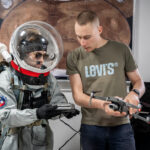
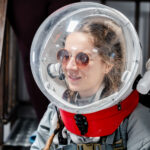
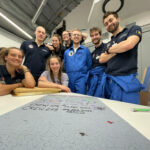
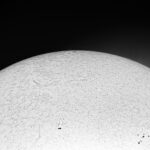

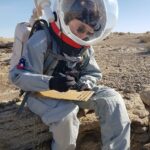
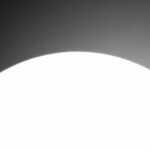
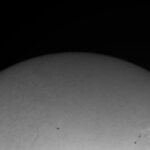
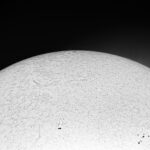

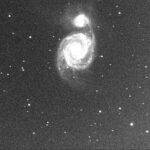
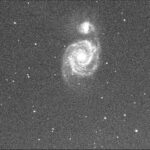
You must be logged in to post a comment.